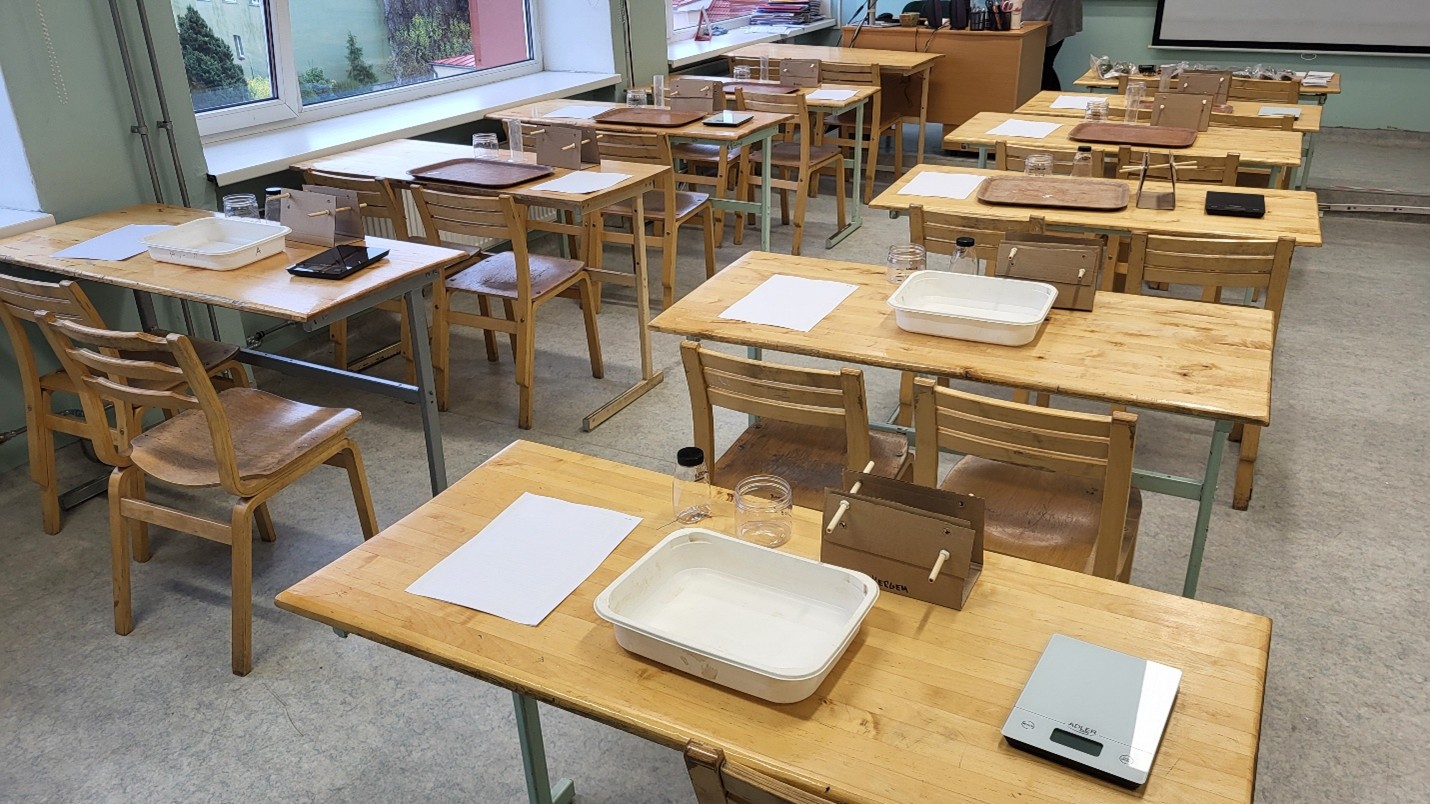In October and November 2025, our project team hosted three interactive workshops as part of our educational outreach for WaterSmartLand. Minna Ots and Merli Neito from the project team together with Marili Sell from the Root Ecology Lab of the University of Tartu were welcomed to Tartu Mart Reiniku school to explore the fascinating world of soil and water with 6th-grade students.
Although our project primarily focuses on water, we decided to bring another vital element into the spotlight—soil. Why? Because water and soil are deeply interconnected, and understanding this relationship is key to appreciating how ecosystems and the environment function. Our workshop demonstrated how water interacts with different soil types and how vegetation can influence this process.
The timing of the workshops aligned perfectly with the natural science curriculum for the 6th grade students, who were either just starting or had recently completed their first lessons on soil. For some, this was an exciting introduction; for others, a chance to apply their new knowledge in a hands-on way.

What We Did
We kicked off with a quick overview of soil components and their importance — water included, of course!

Students knew soil components well, although sand and clay as the main mineral components were not popular guesses. However, that small knowledge gap was bridged thanks to our introduction as students got to look at and feel both sand and clay, learning the differences and characteristics of each.
For the practical part, each pair of students received a bottle of soil — some sandy, some clay-rich, and some unique and interesting mixtures. Half of the samples included vegetation.

Using a worksheet, students:
• Observed and described their soil (colour, texture, weight, etc.)
• Sketched what they saw
• Set up an experiment using simple, low-waste equipment we designed: a cardboard stand, bamboo straws, and a bit of tack.
The experiment simulated rainfall and its potentially eroding effect on the soil. Students poured 150 ml of water onto their soil sample and measured how long it took to seep through. They then compared before-and-after observations — how the soil looked, how much water drained, and how its weight changed.

Finally, we summarized the findings and made a comparative conclusion. Here are some graphs of the results of the students’ work!


Extra Learning & Fun
Each student received:
• A pamphlet with more information about soil and ideas for at-home experiments.
• A postcard to draw soil from a familiar place and send back to us.

The feedback was overwhelmingly positive! Teachers appreciated the curriculum connection, and students said the workshop helped them understand and remember soil concepts better.
Looking Ahead
The members of our project team are very grateful to the teachers from Tartu Mart Reiniku School for having us over and we also thank Marili Sell for helping with the workshops.
For now, the equipment is taking a winter holiday, but who knows, maybe in spring there will be more soil adventures!

